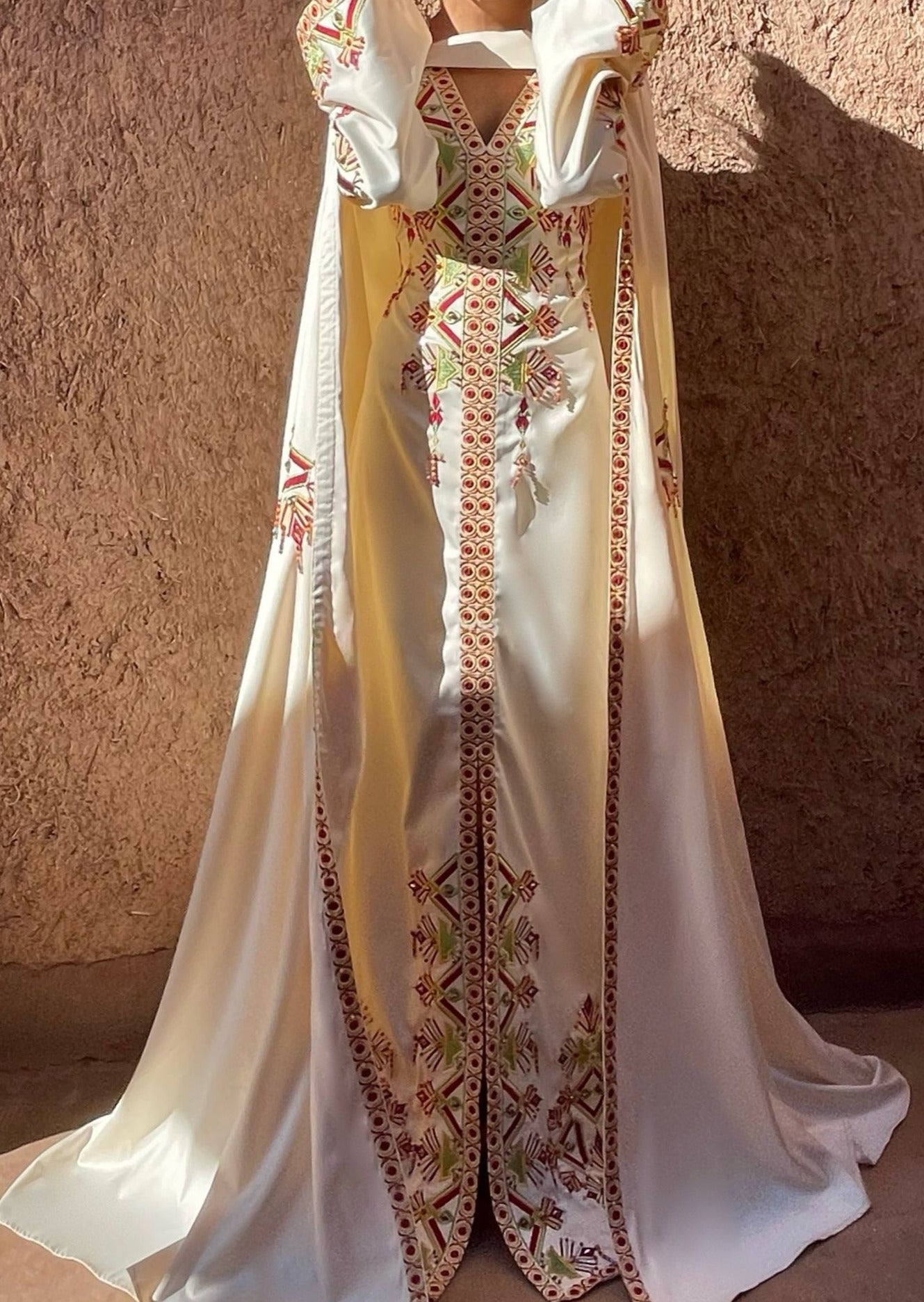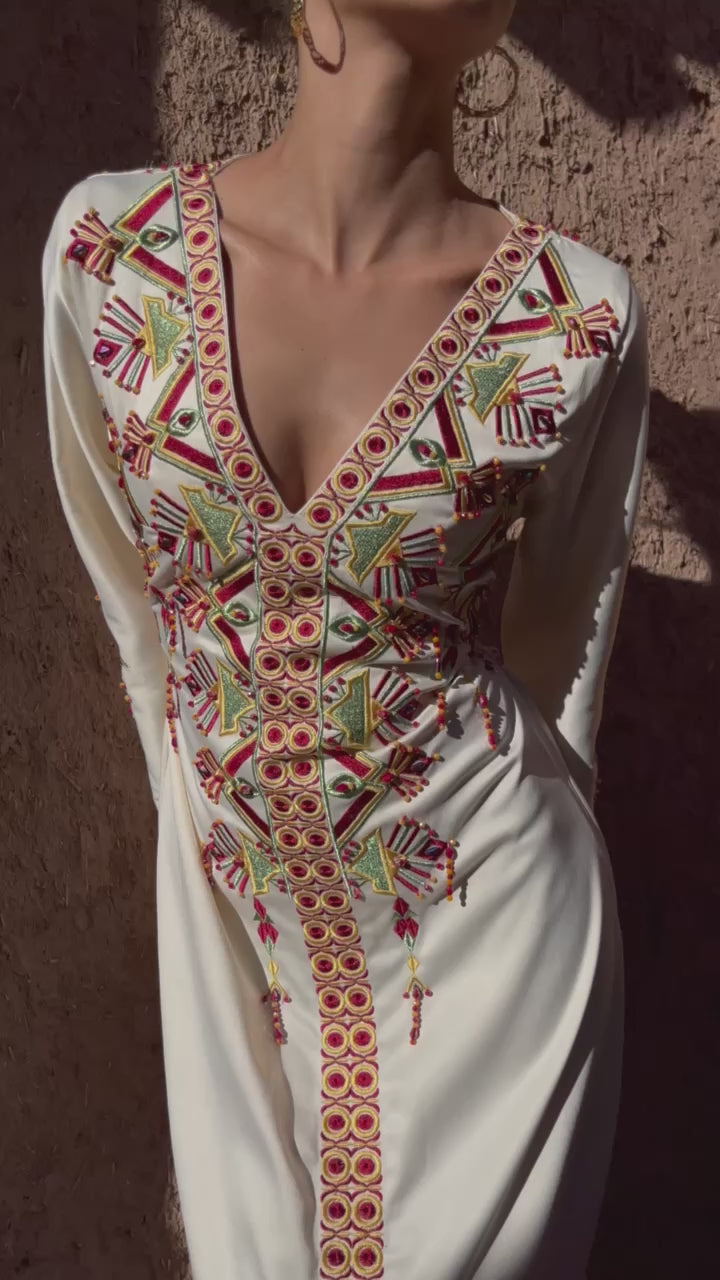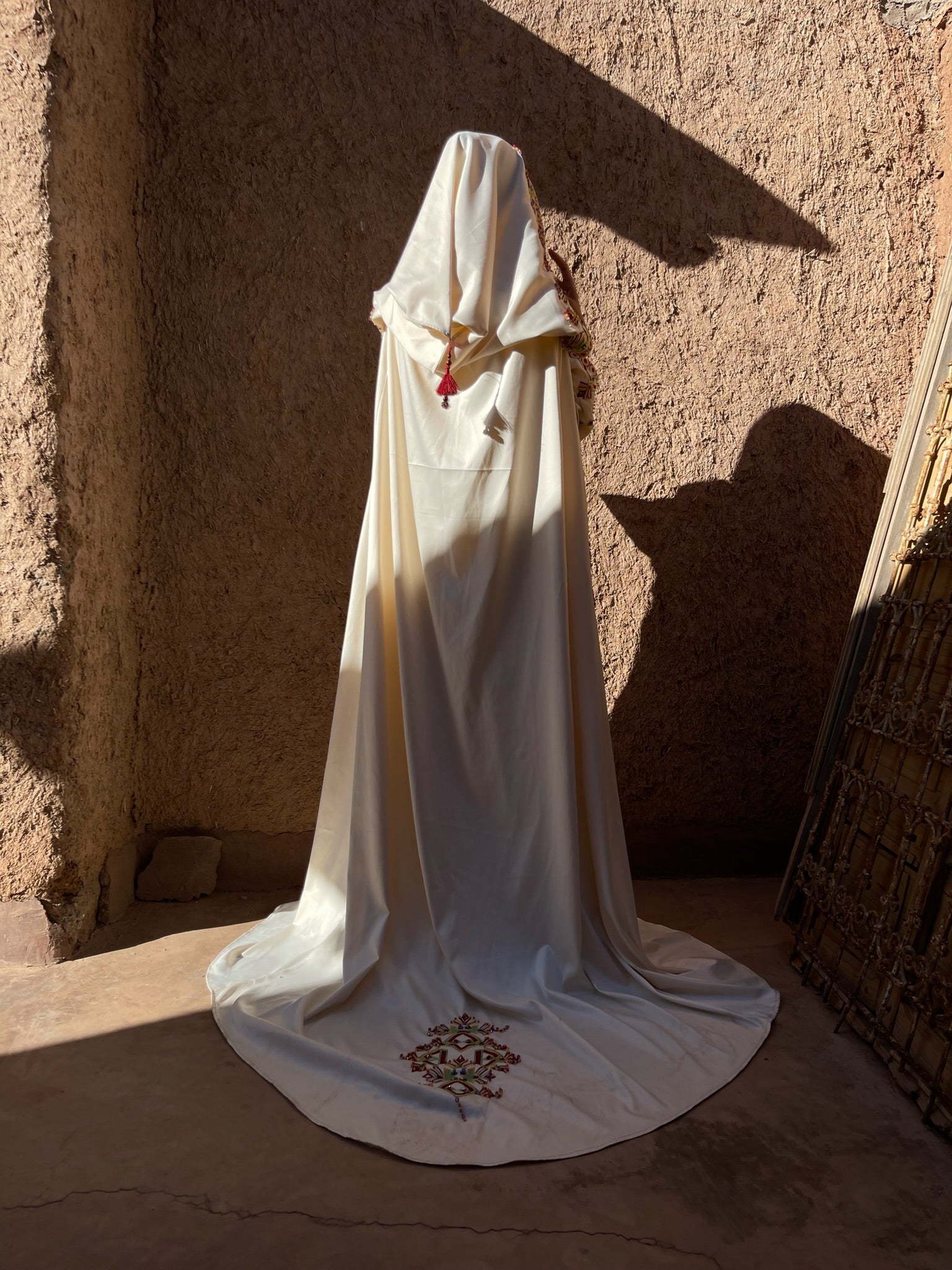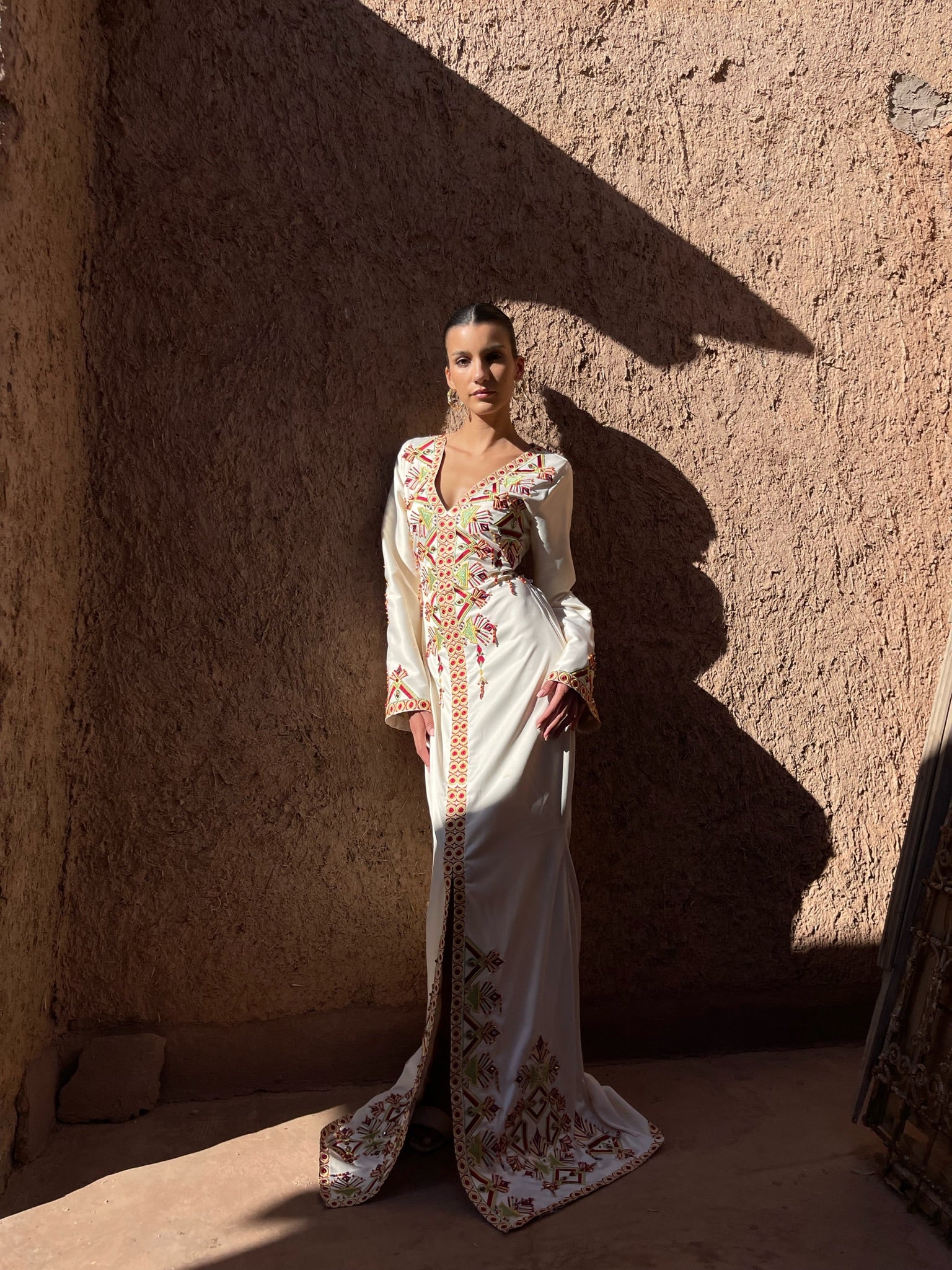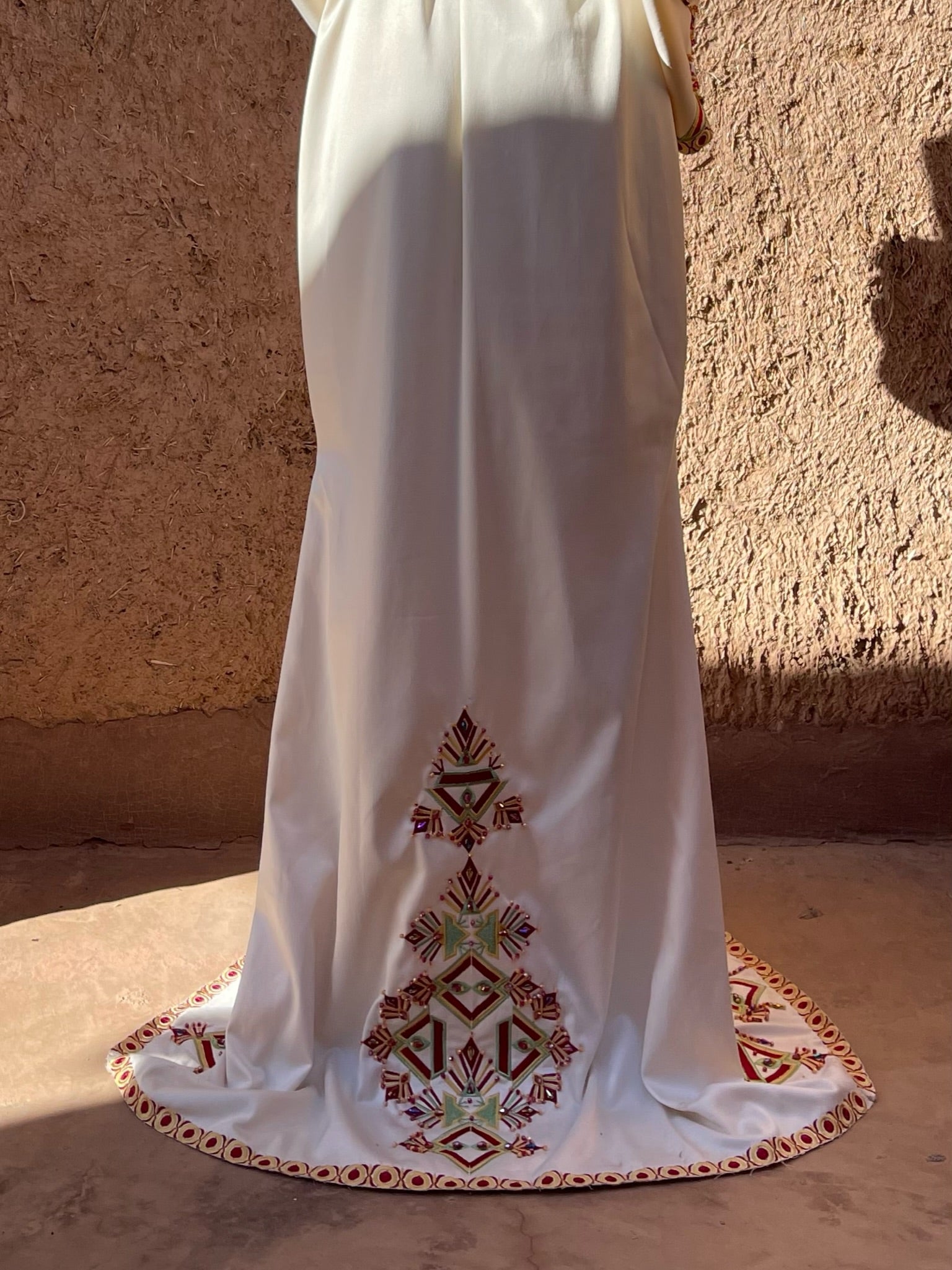The techniques used
One of the key elements that sets the kaftan apart is the quality of the materials used. Moroccan artisans favor sumptuous fabrics such as velvet, silk, brocade, and satin. These noble materials not only provide a rich and luxurious texture, but they also help to highlight the intricate embroidery and embellishments.
Embroidery is at the heart of kaftan craftsmanship. Moroccan embroidery techniques, called "tarz," are varied and require great mastery. Among the most famous are "randa" embroidery, characterized by its delicate geometric and floral patterns, and "fetla" embroidery, which uses gold or silver threads to add a touch of shine and prestige. These embroideries are done by hand, a meticulous work that can take several weeks for a single kaftan.
Besides embroidery, trimmings play a crucial role in the aesthetics of the kaftan. The "sfifa" is an ornate band that borders the kaftan, adding a refined finish. Traditional buttons, called "akads", are also handmade and often decorate the front of the kaftan. These details require extreme precision and are often made by specialized artisans.



